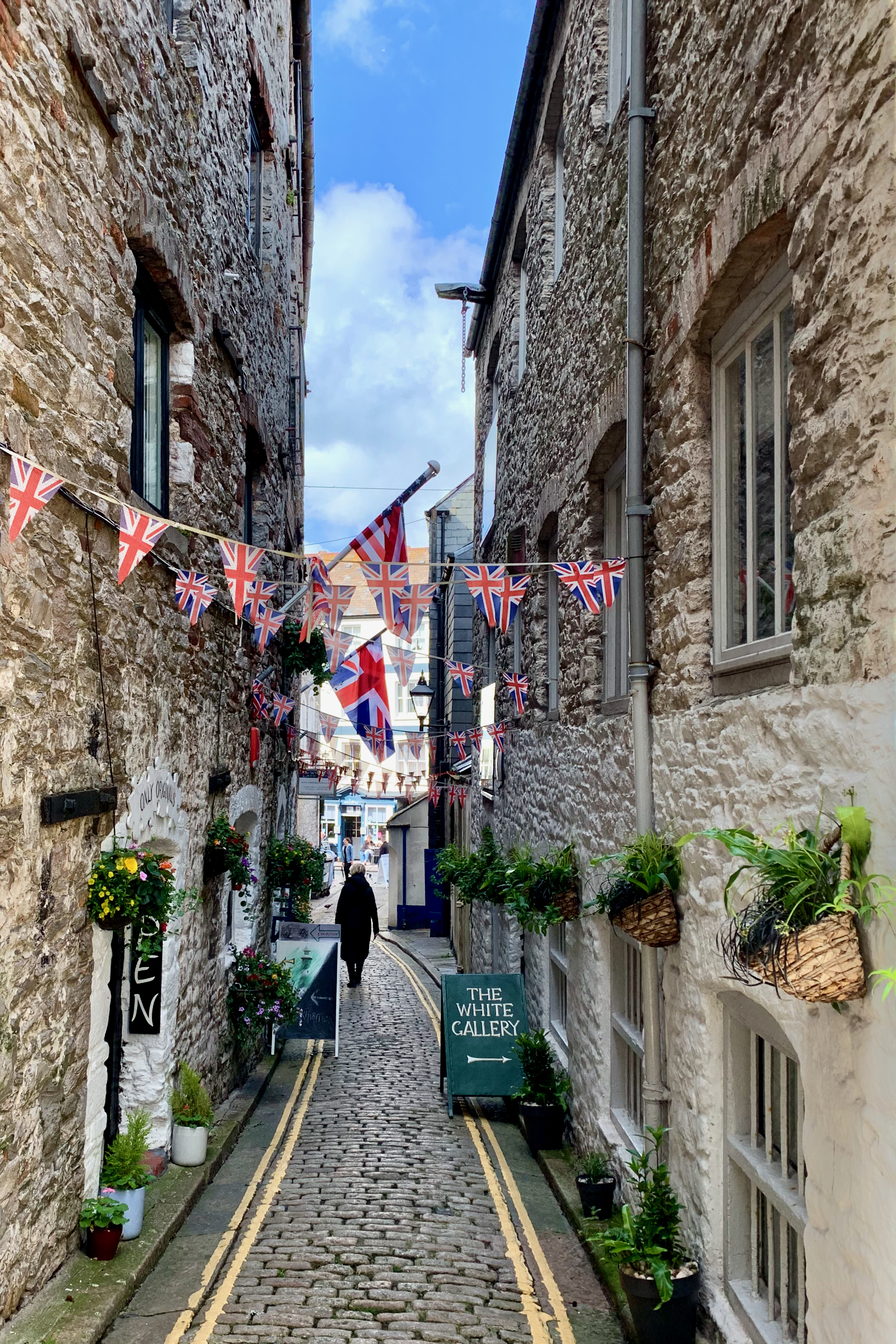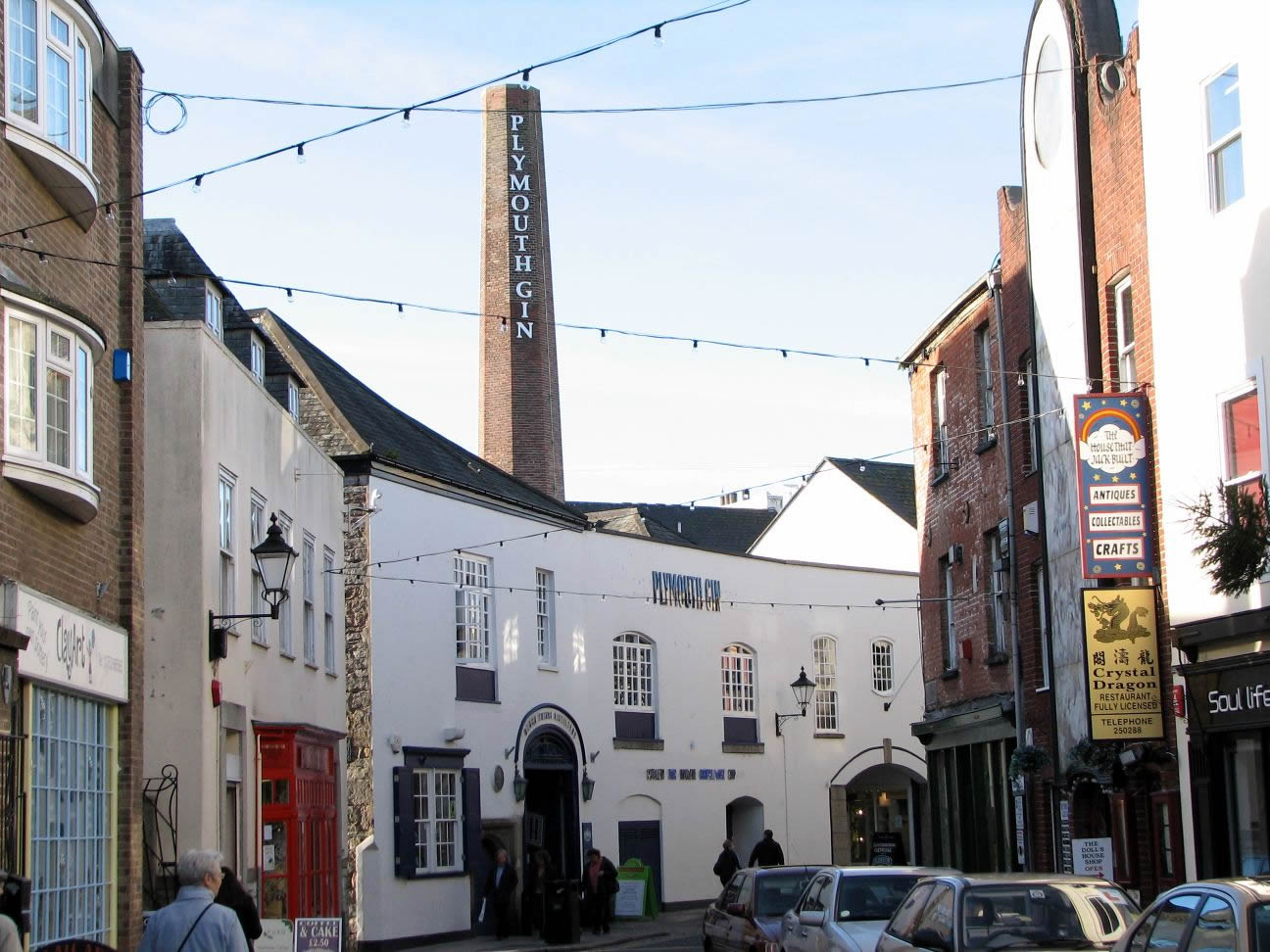Barbican, Plymouth on:
[Wikipedia]
[Google]
[Amazon]
 The Barbican is the name given to the western and northern sides of Sutton Harbour, the original harbour of Plymouth in
The Barbican is the name given to the western and northern sides of Sutton Harbour, the original harbour of Plymouth in

 The present Barbican district is generally regarded as being roughly equivalent to the location and size of the medieval walled town of Sutton. A '' barbican'' is a fortified gate, and here the name probably derives from the 'Castle Barbican' which was an entrance to
The present Barbican district is generally regarded as being roughly equivalent to the location and size of the medieval walled town of Sutton. A '' barbican'' is a fortified gate, and here the name probably derives from the 'Castle Barbican' which was an entrance to
 Places of interest include the National Marine Aquarium (technically in Coxside) which is one of the larger aquaria in Britain and has one of the deepest tanks in Europe; the Elizabethan House, an old house built in the early 16th century, now used as a museum; the
Places of interest include the National Marine Aquarium (technically in Coxside) which is one of the larger aquaria in Britain and has one of the deepest tanks in Europe; the Elizabethan House, an old house built in the early 16th century, now used as a museum; the  The Barbican also contains a variety of shops and businesses including the Barbican Theatre, retail art galleries, the Plymouth Gin Distillery, the Dolphin Inn, Plymouth and numerous bars and eating places.
The Barbican also contains a variety of shops and businesses including the Barbican Theatre, retail art galleries, the Plymouth Gin Distillery, the Dolphin Inn, Plymouth and numerous bars and eating places.
Barbican Visitors' Guide
South West image Bank (Plymouth Barbican Association)
Plymouth Barbican Guide and Event Portal
{{coord, 50, 22, 2, N, 4, 8, 10, W, display=title, type:city_region:GB-PLY Tourist attractions in Plymouth, Devon Geography of Plymouth, Devon Ports and harbours of Devon
 The Barbican is the name given to the western and northern sides of Sutton Harbour, the original harbour of Plymouth in
The Barbican is the name given to the western and northern sides of Sutton Harbour, the original harbour of Plymouth in Devon
Devon ( , historically known as Devonshire , ) is a ceremonial and non-metropolitan county in South West England. The most populous settlement in Devon is the city of Plymouth, followed by Devon's county town, the city of Exeter. Devo ...
, England
England is a country that is part of the United Kingdom. It shares land borders with Wales to its west and Scotland to its north. The Irish Sea lies northwest and the Celtic Sea to the southwest. It is separated from continental Europe b ...
. It was one of the few parts of the city to escape most of the destruction of The Blitz
The Blitz was a German bombing campaign against the United Kingdom in 1940 and 1941, during the Second World War. The term was first used by the British press and originated from the term , the German word meaning 'lightning war'.
The Germa ...
during the Second World War
World War II or the Second World War, often abbreviated as WWII or WW2, was a world war that lasted from 1939 to 1945. It involved the vast majority of the world's countries—including all of the great powers—forming two opposi ...
and the preceding era of slum clearance
Slum clearance, slum eviction or slum removal is an urban renewal strategy used to transform low income settlements with poor reputation into another type of development or housing. This has long been a strategy for redeveloping urban communities; ...
following the Public Health Act 1848
Local boards or local boards of health were local authorities in urban areas of England and Wales from 1848 to 1894. They were formed in response to cholera epidemics and were given powers to control sewers, clean the streets, regulate environment ...
. Two or three streets still retain some of the architecture of a historic fishing port. The Barbican has the largest concentration of cobbled street
Cobblestone is a natural building material based on cobble-sized stones, and is used for pavement roads, streets, and buildings.
Setts, also called Belgian blocks, are often casually referred to as "cobbles", although a sett is distinct fr ...
s in Britain and contains 100 listed buildings.
History

 The present Barbican district is generally regarded as being roughly equivalent to the location and size of the medieval walled town of Sutton. A '' barbican'' is a fortified gate, and here the name probably derives from the 'Castle Barbican' which was an entrance to
The present Barbican district is generally regarded as being roughly equivalent to the location and size of the medieval walled town of Sutton. A '' barbican'' is a fortified gate, and here the name probably derives from the 'Castle Barbican' which was an entrance to Plymouth Castle
Plymouth Castle was a castle built in the early 15th century to defend the town and harbour of Plymouth in Devon, England. By the end of the 16th century it had ceased to have any military function and fell into disrepair, being almost completely ...
, the late medieval fortress that guarded access to the Cattewater
The city of Plymouth, Devon, England is bounded by Dartmoor to the north, the Hamoaze to the west, the open expanse of water called Plymouth Sound to the south and the river Plym to the east.
The Cattewater is that stretch of water where the mo ...
, prior to the building of the Royal Citadel.
For centuries, the Barbican was home to Plymouth's fish market (now relocated to the other side of the harbour) and is still home to many fishermen. One of the oldest streets in Plymouth running north from the Barbican is New Street, which was formerly called Rag Street.
Much historical research and outreach work is done by the Old Plymouth Society and many of the oldest surviving buildings were restored and are still owned and maintained by the Plymouth Barbican Association.
However, many old and significant buildings were demolished during the late 19th and first half of the 20th centuries, which had decayed into unsanitary and heavily overcrowded slum tenements following the removal of wealthy merchant landowners to country estates and the subdivision of 'Golden Era' Elizabethan properties which had once been grand, reflecting the wealth and prosperity of the city at the time. A government survey following the Public Health Acts indicated that overcrowding in Plymouth Sutton was amongst the worst in western Europe comparable only with Warsaw
Warsaw ( pl, Warszawa, ), officially the Capital City of Warsaw,, abbreviation: ''m.st. Warszawa'' is the capital and largest city of Poland. The metropolis stands on the River Vistula in east-central Poland, and its population is officia ...
, with families of up to 10 occupying a single room tenancy.Lost Plymouth: Hidden Heritage of Three Towns, Felicity Goddall,2009
The Plymouth Gin Distillery has been producing Plymouth Gin
Plymouth Gin is a style and brand of gin that has been distilled on the same premises on the Barbican in Plymouth, Devon, since 1793. The site of production, the Plymouth Gin Distillery, was built in 1431 and is reputed to have once been a mo ...
since 1793, which was exported around the world by the Royal Navy
The Royal Navy (RN) is the United Kingdom's naval warfare force. Although warships were used by English and Scottish kings from the early medieval period, the first major maritime engagements were fought in the Hundred Years' War against ...
. During the 1930s, it was the most widely distributed gin and has a protected designation of origin.
Places of interest
 Places of interest include the National Marine Aquarium (technically in Coxside) which is one of the larger aquaria in Britain and has one of the deepest tanks in Europe; the Elizabethan House, an old house built in the early 16th century, now used as a museum; the
Places of interest include the National Marine Aquarium (technically in Coxside) which is one of the larger aquaria in Britain and has one of the deepest tanks in Europe; the Elizabethan House, an old house built in the early 16th century, now used as a museum; the Mayflower Steps
The Mayflower Steps are close to the site in the Barbican area of Plymouth, south-west England, from which the Pilgrim Fathers
The Pilgrims, also known as the Pilgrim Fathers, were the English settlers who came to North America on the '' ...
near where the Pilgrims finally set off in the Mayflower
''Mayflower'' was an English ship that transported a group of English families, known today as the Pilgrims, from England to the New World in 1620. After a grueling 10 weeks at sea, ''Mayflower'', with 102 passengers and a crew of about 30, r ...
for the New World in 1620, which is described in the nearby visitors' centre; and the studio gallery of the late painter and eccentric Robert Lenkiewicz, who lived and worked on the Barbican for many years deriving much of his inspiration and income from the local community.
 The Barbican also contains a variety of shops and businesses including the Barbican Theatre, retail art galleries, the Plymouth Gin Distillery, the Dolphin Inn, Plymouth and numerous bars and eating places.
The Barbican also contains a variety of shops and businesses including the Barbican Theatre, retail art galleries, the Plymouth Gin Distillery, the Dolphin Inn, Plymouth and numerous bars and eating places.
Culture
The Barbican boasts someunderground culture
Underground culture, or simply underground, is a term to describe various alternative cultures which either consider themselves different from the mainstream of society and culture, or are considered so by others. The word "underground" is used ...
, from live music to Stone Soup Story Tellers evenings and festivals. The promenade of the Parade, shown above, paved with the traditional granite setts, is now filled by seating in glass-sided enclosures with large square umbrellas and infra-red heaters providing all-weather space.
Developments
The harbour was enclosed by alock
Lock(s) may refer to:
Common meanings
*Lock and key, a mechanical device used to secure items of importance
*Lock (water navigation), a device for boats to transit between different levels of water, as in a canal
Arts and entertainment
* ''Lock ...
in 1993, designed both to provide a constant adequate depth of water for fishing and pleasure craft and to reduce the risk of flood damage being caused to low-lying property. In the same year, the Victorian fish market at the eastern end of Southside Street was closed and the modern fish market opened across Sutton Harbour at Coxside. This has been very successful and the auctions are some of the busiest on the south coast. There is much activity around the market quay as trawlers and small fishing boats arrive to offload their catches.
During the last two decades accelerating developments have taken place around most of Sutton Pool area. This has mostly involved the building of distinctive modern style waterside blocks of flats which have prevented the realisation of David Mackay's plan for a seafront 'gateway' from Sutton Pool into the city centre which would have required the clearing of many of the few remaining historical streets and the redevelopment of Bretonside Bus Station. There has also been adverse comment about the recent extension of the many marina pontoons severely limiting the area of open water.
See also
* Grade II* listed buildings in PlymouthReferences
* Plymouth's Historic Barbican - Chris Robinson - Pen & Ink Publishing (with Plymouth Barbican Association) 2007External links
Barbican Visitors' Guide
South West image Bank (Plymouth Barbican Association)
Plymouth Barbican Guide and Event Portal
{{coord, 50, 22, 2, N, 4, 8, 10, W, display=title, type:city_region:GB-PLY Tourist attractions in Plymouth, Devon Geography of Plymouth, Devon Ports and harbours of Devon